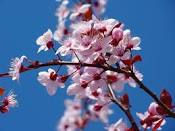Cooking for Immunity
- Heather Herdman
- Nov 4, 2021
- 4 min read
This has been a popular class topic this Fall, so I wanted to share some information for those of you who haven’t been able to join us for a live class. Culinary herbs are a great way to incorporate immune boosting properties into our foods and beverages. Some of the best antiviral herbs, for example, are oregano, thyme, sage, cinnamon, ginger, clove, black pepper, turmeric, garlic, and astragalus. My guess is that many of you have almost all of these in your kitchens! Just be sure your herbs and spices look and smell fresh! If you open your spice jar and don’t get an immediate whiff of the aroma you’re expecting – or if the herbs look brown or discolored – you’re not going to get the benefits of good flavor or healing boost you are looking for…so bring in your jars and we will fill you up with freshness!
If you have eaten foods or had beverages with cinnamon, ginger, clover, black pepper, you may well understand what I mean when I say that these are “warming” herbs and spices. In addition to the burst of warmth that you may notice when you first taste these herbs and spices, your body itself can start to feel warmer if you eat them in sufficient quantities. You can use these herbs in foods and in teas – there’s nothing better than a cup of ginger tea with some honey when a viral respiratory infection comes your way, bringing a sore throat along with it.
Personally, I favor ginger, garlic, astragalus and sage when I think about avoiding or dealing with upper respiratory infections, especially. Ginger (Zingiber officinale) is warming and soothing to the throat, and shows antimicrobial activities and effectiveness in controlling certain viral, bacterial and fungal diseases. Garlic (Allium sativum) has sulfur- containing amino acids and other compounds that seem to increase activity in the immune system. Many research studies have show that garlic has an antimicrobial activity that research has shown to be effective against many types of bacteria, parasites, viruses, and fungal infections. One of the important things to remember with garlic is that it is far more effective as an antimicrobial when consumed raw…but wait! Before you say “no way!”, I’ve got a couple of really yummy ways to enjoy this raw – without the “bite” of simply chomping down on a bulb (although if you can do it, that will work!)
Astragalus (Astragalus membranaceus) comes to us from Traditional Chinese and Ayurvedic medical approaches, and has been considered an antiviral for centuries by those who practice from these perspectives. This is a root that you can obtain either for tea (cut up into small pieces) or for broths and soups (sliced). I throw Astragalus into every broth and soup we make here at Sweet Willow – and if you peak into my tea cup, it’s always in there, no matter what else I may be drinking! You can use Astragalus in the water you use to cook pasta, rice, oatmeal – you name it! You really won’t taste it, but it will still be there, doing it’s thing!
Sage (Salvia officinalis) is not just for holiday dressing/stuffing! Historically, sage has been used as an antiseptic, antifungal, and antimicrobial. Sage tea is used for the treatment of colds and coughs. Hippocrates, the “father of modern medicine”, is said to have prescribed sage poultices to heal infected wounds, sores and ulcers. I love to combine sage, rosemary (Salvia rosmarinus) and bergamot (bee balm) (Monarda didyma) as a warming tea in the winter, with the goal of keeping sore throats at bay!
One word of caution: breastfeeding moms should avoid the use of sage tea, tincture or essential oil unless they want to wean an infant, as sage is very good at decreasing the amount of breastmilk women can produce.
References
Abdalla, W. E., & Abdallah, E. M. (2018). Antibacterial activity of ginger (Zingiber Officinale Rosc.) Rhizome: a mini review. Int J Pharmacogn Chinese Med, 2, 000142.
Bradley, P.R. (1992) British herbal compendium: a handbook of scientific information on widely used plant drugs/published by the British Herbal Medicine Association and produced by its Scientific Committee. Bournemouth Dorset, England, pp. 105-108.
Eidi, A., Eidi, M., Esmaeili, E. (2006). Antidiabetic effect of garlic (Allium sativum L.) in normal and streptozotocin-induced diabetic rats. Phytomedicine, 13(9-10), 624-9. https://doi.org/10.1016/j.phymed.2005.09.010 PMID: 17085291.
Imo, C., & Za’aku, J. S. (2019). Medicinal properties of ginger and garlic: A review. Curr Trends Biomedical Eng & Biosci, 18(2), 47-52.
Menon, V., Elgharib, M., El-awady, R., & Saleh, E. (2021). Ginger: From serving table to salient therapy. Food Bioscience, 100934.
Shahrajabian, M. H., Sun, W., & Cheng, Q. (2019). Astragalus, an ancient medicinal root in traditional Chinese medicine, a gift from silk road. International Journal of Agriculture and Biological Sciences. 2019f, 3(06), 27-38.
Sharma, Y., Fagan, J., & Schaefer, J. (2019). Ethnobotany, phytochemistry, cultivation and medicinal properties of Garden sage (Salvia officinalis L.). J Pharmacogn Phytochem, 8, 3139-3148.
Singh, N. A., Kumar, P., Jyoti, & Kumar, N. (2021). Spices and herbs: Potential antiviral preventives and immunity boosters during COVID-19. Phytotherapy research: PTR, 10.1002/ptr.7019. Advance online publication. https://doi.org/10.1002/ptr.7019




Comments